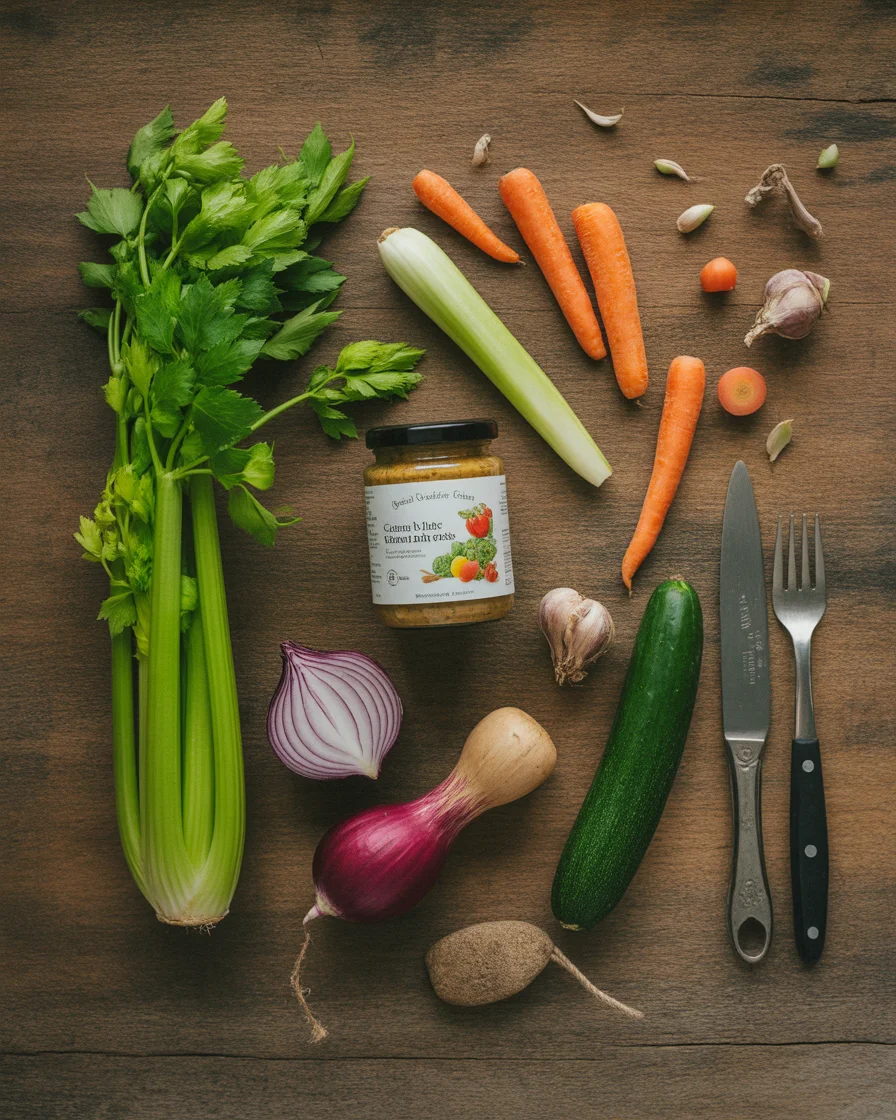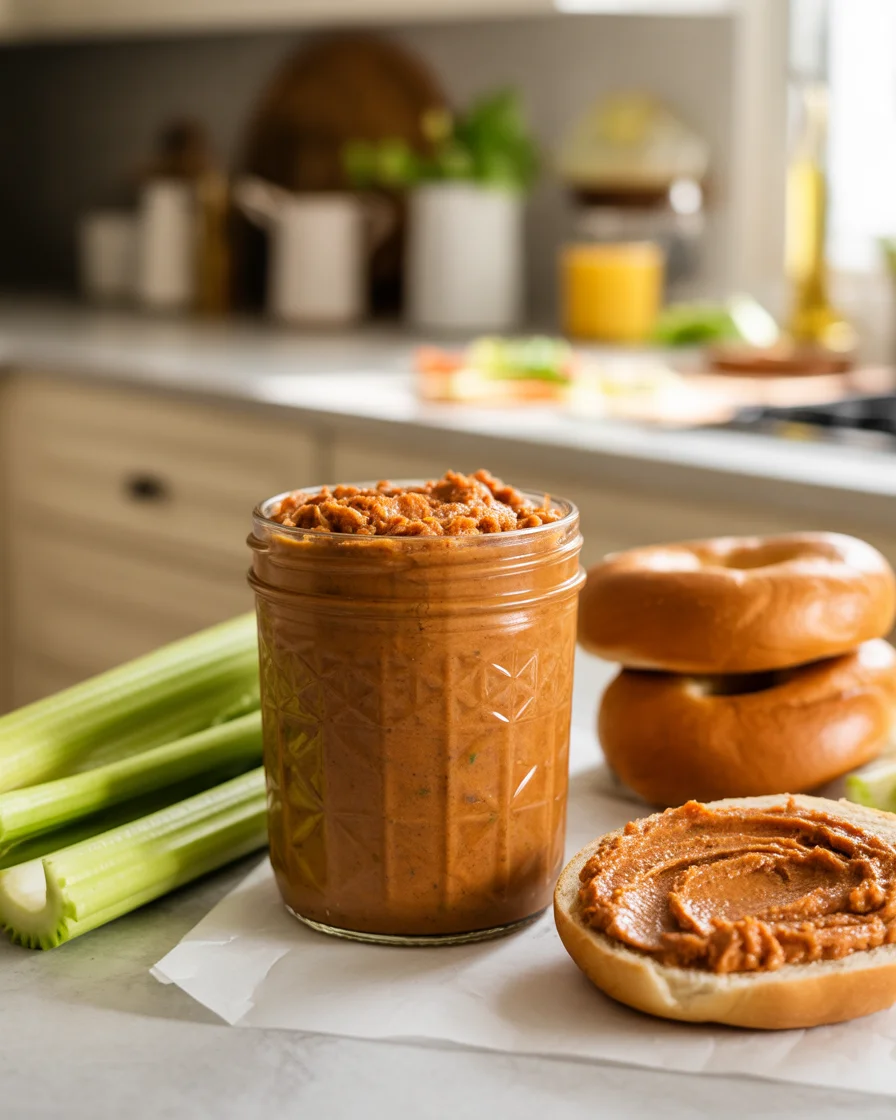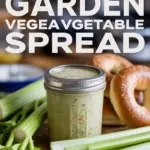Garden Vegetable Spread is the kind of recipe you reach for when your fridge is full of odds and ends and you’re craving something fresh, creamy, and ready in minutes. I first made this on a sleepy Sunday when I wanted a snack but didn’t feel like turning on the oven. What came out of my blender was so smooth and colorful that I ate it with crackers, then spread it on toast, then tucked it into a wrap for lunch the next day. If you’ve got a handful of veggies and a soft block of creaminess waiting in the fridge, you can make magic too. This is the kind of recipe that says hey, you did great today, have a tasty bite.
The Story Behind This Recipe
From my kitchen to yours—Deliciously Creamy Garden Vegetable Spread mixes classic comfort with bright flavor. Tested, tasted, and ready for your table. Garden Vegetable Spread is the kind of recipe you reach for when your fridge is full of odds and ends and you’re craving something fresh, creamy,…
Unique Variations of Vegetable Spreads
I love how flexible a veggie spread can be. The base idea is simple: blend soft dairy or dairy-free creaminess with bright, crunchy vegetables, then season. But the flavors you can build are endless. If you’re craving a little sunshine, go with carrots, red bell pepper, and lemon zest. Want something mellow and herby? Fold in tender zucchini, scallions, and dill. The magic is in balancing color, crunch, and creaminess.
Flavor paths I keep coming back to
Roasted red pepper and garlic adds cozy depth. Cucumber and fresh dill tastes cool and picnic-ready. Spinach and scallion gives a gentle green vibe that’s lovely for breakfast toast. And when I want bold, I stir in a spoon of pesto or a pinch of smoked paprika. Each version still feels like a Deliciously Creamy Garden Vegetable Spread, just with its own personality.
If you’re into meal prep, make a double batch and split it into two bowls. Stir sun-dried tomatoes and basil into one, and chopped parsley and lemon into the other. Two flavors, one wash of the blender. Super efficient. You can also check out these quick kitchen ideas for making prep easier on busy nights: creative spread ideas.
One trick I swear by: chop a portion of your veggies super fine and fold them in after blending. That way you get both silky texture and tiny crisp bites in the same spoonful. It makes the spread feel fresh every time you dip in.

Health Benefits of Vegetable Spreads
Vegetable spreads are a great way to slip more produce into your day without overthinking it. You’re getting fiber from raw or lightly cooked veggies, plus hydration if you use high-water veggies like cucumber or bell pepper. When you pair them with a creamy base, you also get staying power so you aren’t hungry an hour later. I like to add a spoon of Greek yogurt for extra protein, which makes it a happy afternoon snack or a quick breakfast spread on whole-grain toast.
Another win is sodium control. Store-bought dips can be tasty, but they’re often salty. Making your own means you can season with lemon, herbs, and spices first, then add salt to taste. I find a squeeze of citrus and a pinch of garlic powder wake everything up fast. If you’re exploring healthier swaps, take a peek at my easy guide to better-for-you condiments here: condiment makeovers.
For families, it’s a sneaky veggie helper. Kids often love dipping crackers and pretzels, and this spread delivers color and flavor without feeling like a “have to.” Even better, you can blend in tiny bits of carrot or spinach and they’ll focus on the creamy goodness. That’s a veggie win in my book.

Tips for Making a Creamy Vegetable Spread
Texture, thickness, and balance
The key to a silky, spoonable spread is getting the right ratio of dairy or dairy-free base to veggies. I like to start with cream cheese or a dairy-free cream cheese alternative, then add a scoop of Greek yogurt to loosen it up. Blend it first before adding veggies so you know exactly how creamy the base is.
- Use soft ingredients first: blend cream cheese and yogurt until smooth.
- Choose veggies that blend well: bell pepper, carrot, scallion, cucumber, and spinach are reliable.
- Watch moisture: if your spread gets too wet, add a spoon of cream cheese or even a few cashews to firm it up.
- Season early and late: blend in lemon juice, a pinch of salt, and garlic powder, then finish with fresh herbs.
- Fold for crunch: reserve a handful of finely chopped veggies to stir in at the end.
Pro tip: Chill your spread for 30 minutes before serving. The flavors settle and the texture firms up just enough to swipe beautifully on crackers and bread.
For a dairy-free version, try blending soaked cashews with a splash of olive oil and lemon until smooth. It’s shockingly creamy. If you’d like a step-by-step guide, I’ve got a simple walkthrough here: dairy-free spread basics. And if you’re building a party platter, bookmark this handy page for planning: party platter templates.
“I made this for a last-minute get-together and it disappeared in twenty minutes. The lemon and dill made it taste fresh, and my cousin kept asking for the recipe.”
Finally, season with confidence. A generous squeeze of lemon, freshly cracked pepper, and a pinch of salt can be the difference between good and unbeatable. When in doubt, add a little acid and taste again. That’s how a humble bowl turns into a Deliciously Creamy Garden Vegetable Spread you’ll make on repeat.
How to Use Vegetable Spreads in Meals
This spread is a kitchen chameleon. It can be breakfast, lunch, a snack, or a starter all in one. For breakfast, I slather it on whole-grain toast and top with sliced cucumber or radish. On busy workdays, I roll it into a wrap with turkey and romaine. For a quick dinner, I dollop it on warm quinoa and leftover roasted veggies for an easy grain bowl.
- Spread on sandwiches or wraps in place of mayo for extra color and flavor.
- Use as a quick sauce for pasta salad by thinning with a splash of pasta water.
- Serve it as a dip with raw veggies, pita wedges, or crunchy crackers.
- Dollop on baked potatoes or sweet potatoes with chives.
- Layer it on flatbreads, then add tomatoes and arugula for a fast lunch.
It’s also perfect for appetizer boards. Add a bowl of your Deliciously Creamy Garden Vegetable Spread among olives, sliced peppers, and crispbread. People love a colorful dip they can swipe, and this one always keeps the conversation going. If you want an easy reference to plan a week of spreads and snacks, here’s a helpful page I use when building my menu: veggie spread week.
When I’m cooking for friends, I put this out first so I can finish the main course without anyone getting hangry. It buys me time and sets a fresh, relaxed vibe at the table.
Pairing Suggestions for Vegetable Spreads
Pairing is where your spread becomes a mini meal. For crunch, I love seeded crackers, toasted baguette slices, or cucumber rounds. For protein, try smoked salmon, hard-boiled eggs, or chickpeas crisped in a pan. If you’re sipping something, sparkling water with lemon is great at noon, and a dry white wine pairs nicely for evening appetizers. I also adore it with iced tea and a squeeze of orange.
Fresh pairings I repeat week after week
Morning: toast, spread, sliced tomato, and a pinch of everything bagel seasoning. Lunch: whole-grain wrap with turkey, spinach, and a thick swipe of spread. Snack: mini peppers and pretzels for dipping. Dinner: salmon and a side of herbed quinoa with a spoonful of spread as a sauce. If you want more pairing ideas, I keep a running list here: snacks and spreads.
When you hit the seasoning just right, you’ll taste lemon, herbs, and a gentle sweetness from the veggies. That bright flavor is what makes this a Deliciously Creamy Garden Vegetable Spread that holds its own next to almost anything on your table.
Common Questions
How long does it keep in the fridge?
About 3 to 4 days in a sealed container. Stir before serving, and add a squeeze of lemon if the flavors need a refresh.
Can I freeze it?
I don’t recommend it. The texture can separate. It’s better to make a smaller batch and enjoy it fresh.
What veggies work best?
Bell peppers, carrot, cucumber, spinach, scallion, and dill are my favorites. Avoid super watery add-ins like tomatoes unless you seed them first.
Can I make it dairy-free?
Yes. Use dairy-free cream cheese or blended cashews with olive oil and lemon. It’s still creamy and delicious.
How spicy can I go?
As spicy as you like. Add a pinch of red pepper flakes or a dash of hot sauce at the end so you can control the heat.
From My Kitchen to Yours
This little bowl has saved so many snack times and made quick meals feel special. Keep the veggies colorful, the base creamy, and the seasoning bright, and you’ll have a Deliciously Creamy Garden Vegetable Spread that fits your day, whether you’re setting out snacks for friends or layering a sandwich for lunch. If you want another take to compare and riff on, I love the ideas in this Garden Vegetable Spread from 12 Tomatoes. Now grab your blender, snag a lemon, and make it your own. I can’t wait to hear which combo becomes your favorite, because once you try it, you’ll be making your Deliciously Creamy Garden Vegetable Spread on repeat.

Garden Vegetable Spread
Ingredients
Method
- In a blender, combine the cream cheese and Greek yogurt. Blend until smooth.
- Add the chopped bell pepper, carrot, cucumber, scallion, and spinach to the blender.
- Blend until the vegetables are finely incorporated into the creamy base.
- Season with lemon juice, garlic powder, salt, and pepper. Blend until everything is well mixed.
- For added texture, reserve a handful of finely chopped veggies and stir them in after blending.
- Chill the spread for 30 minutes before serving to enhance the flavors.



